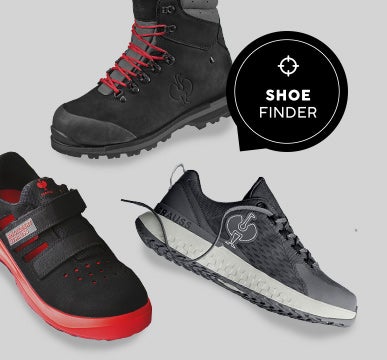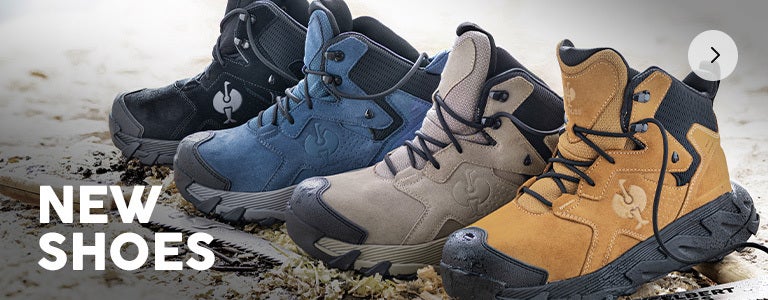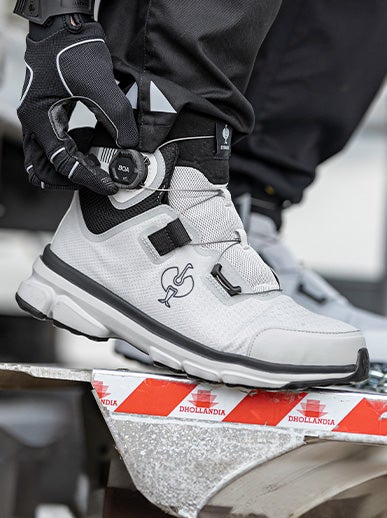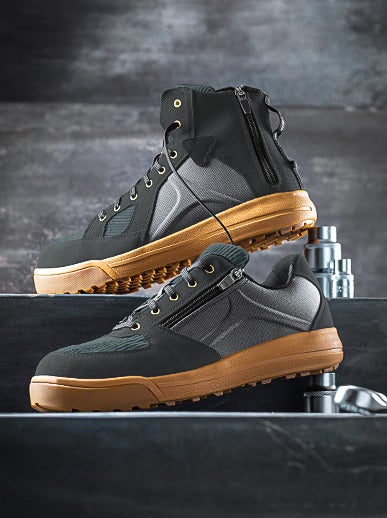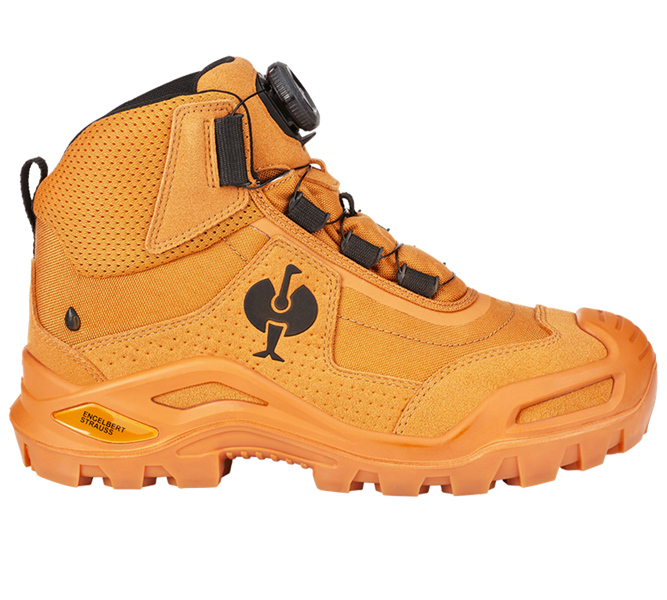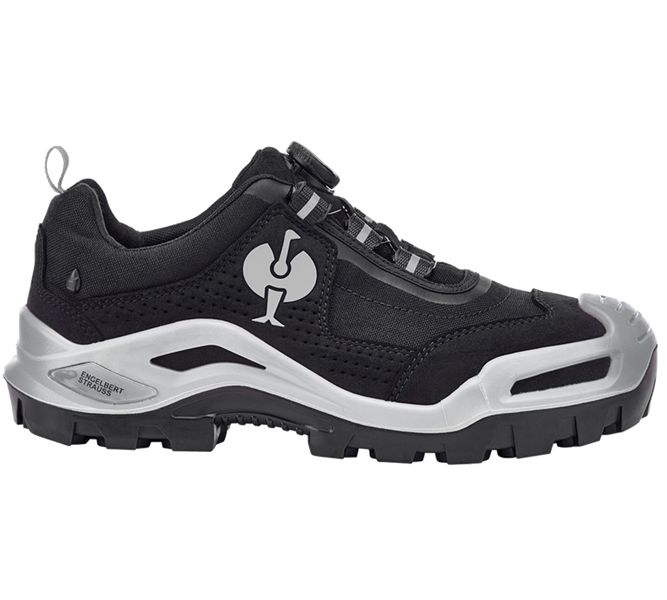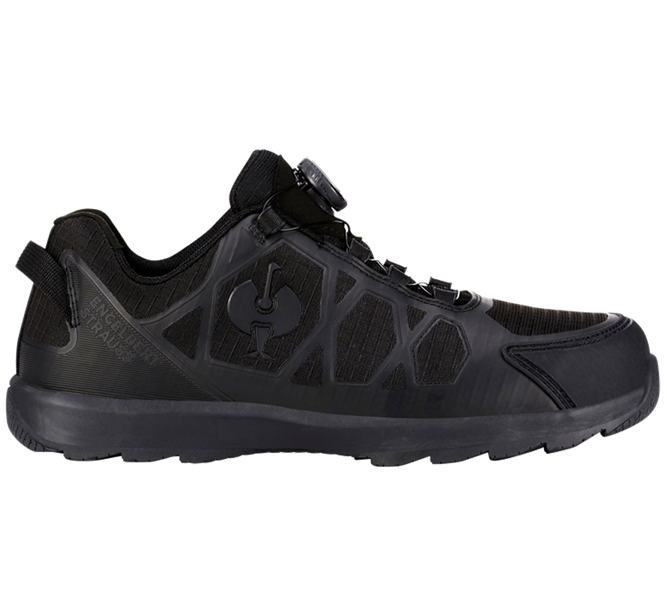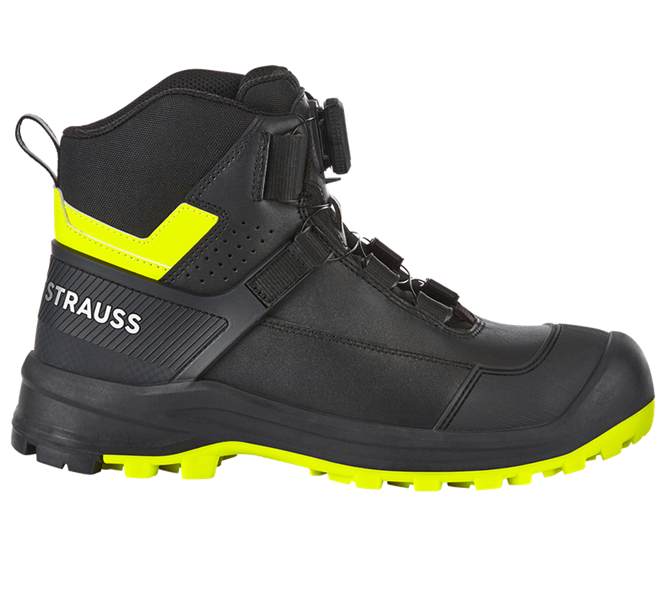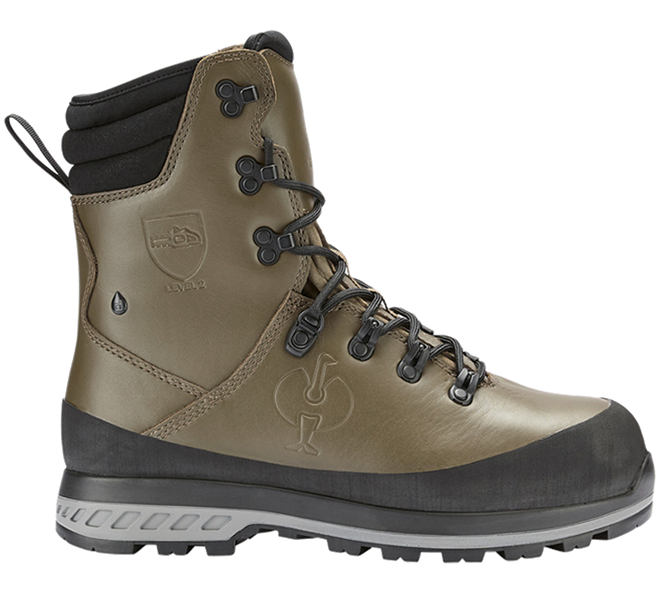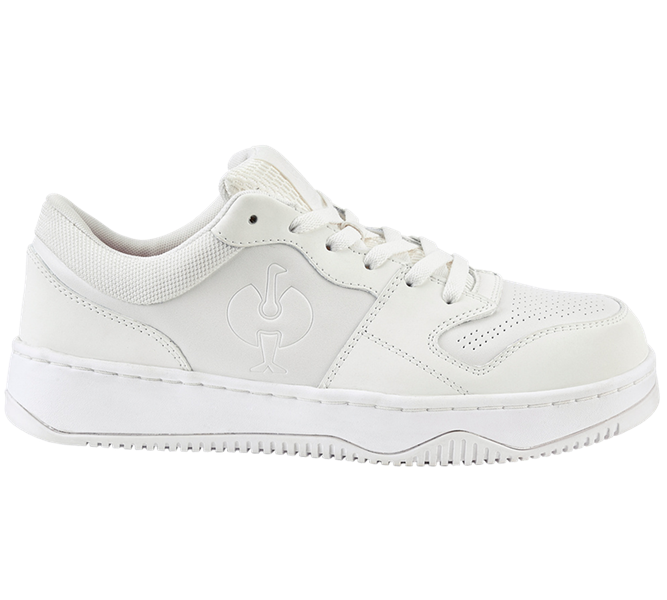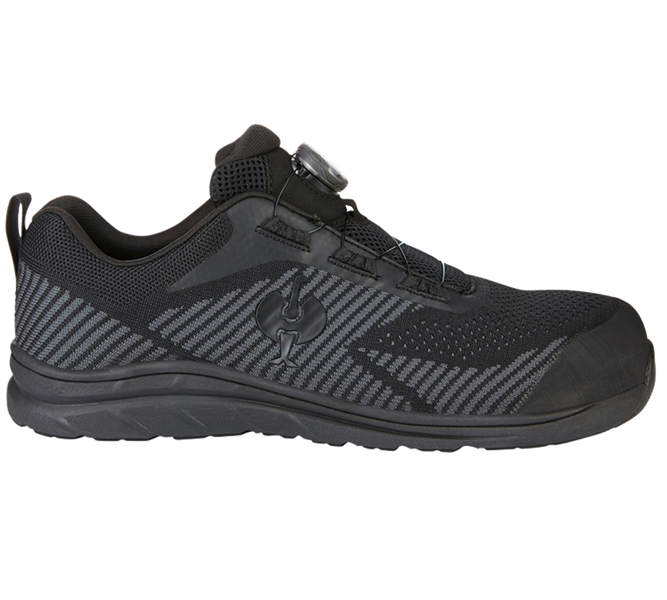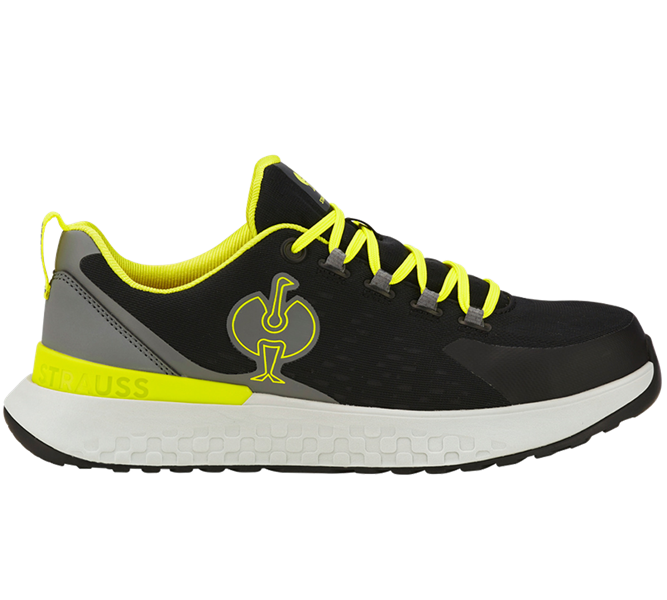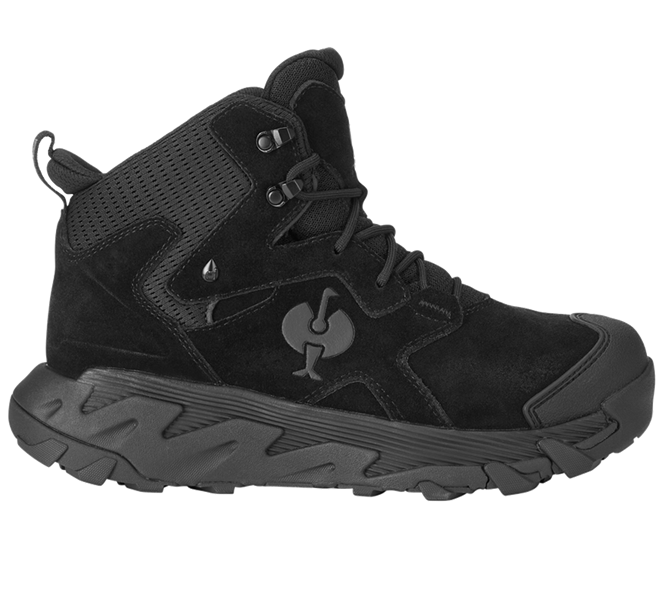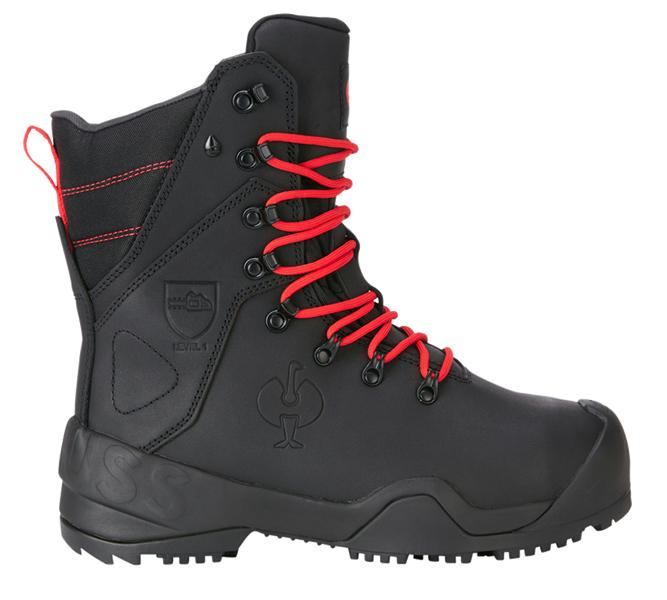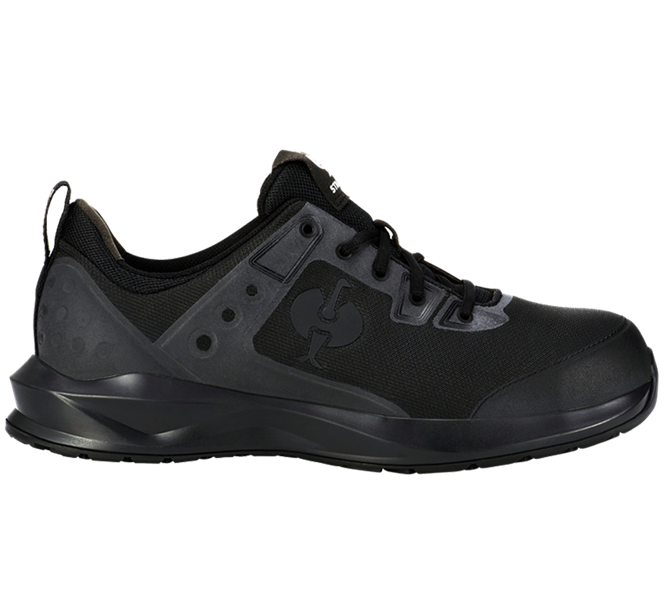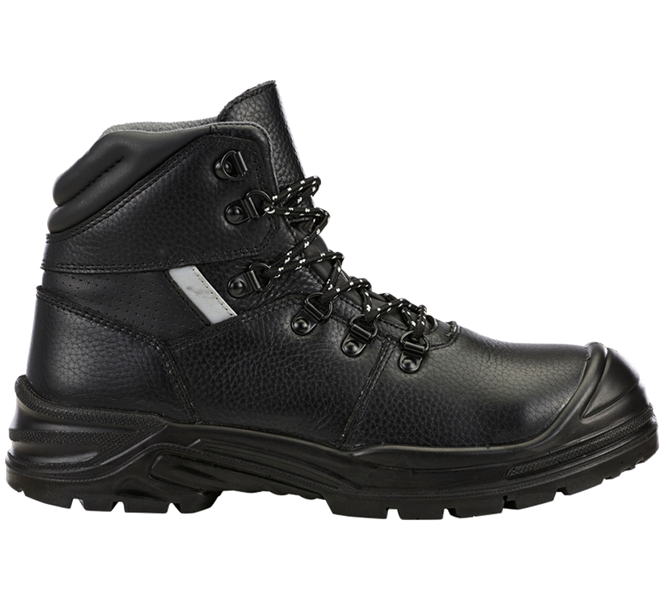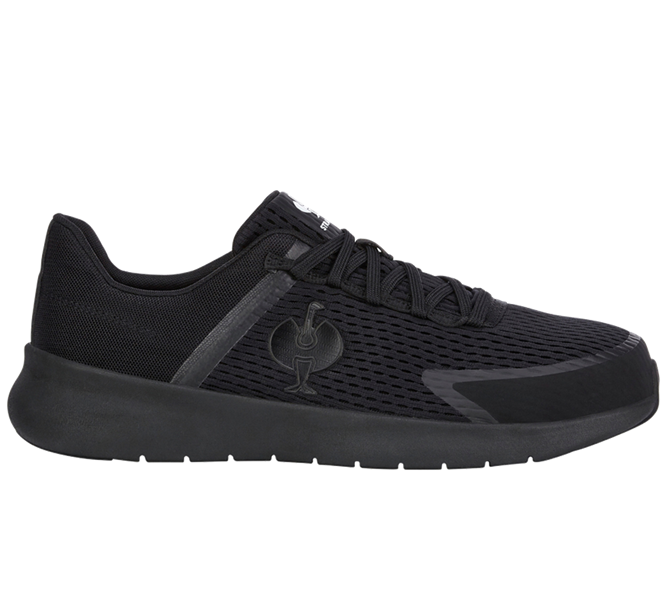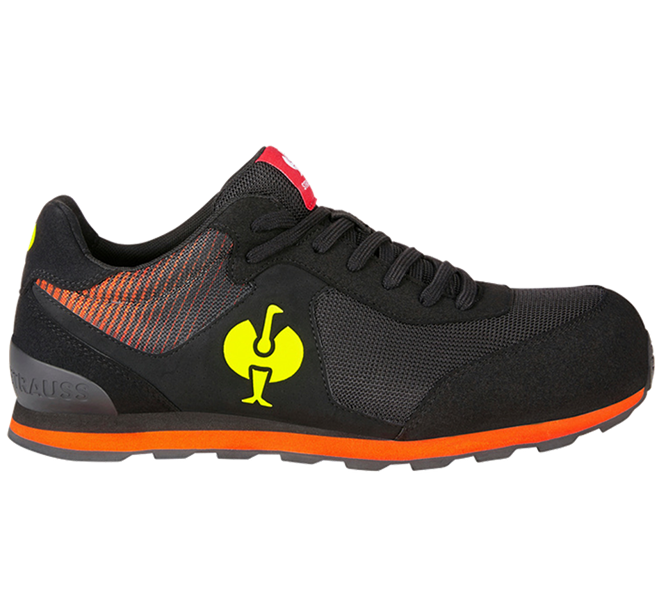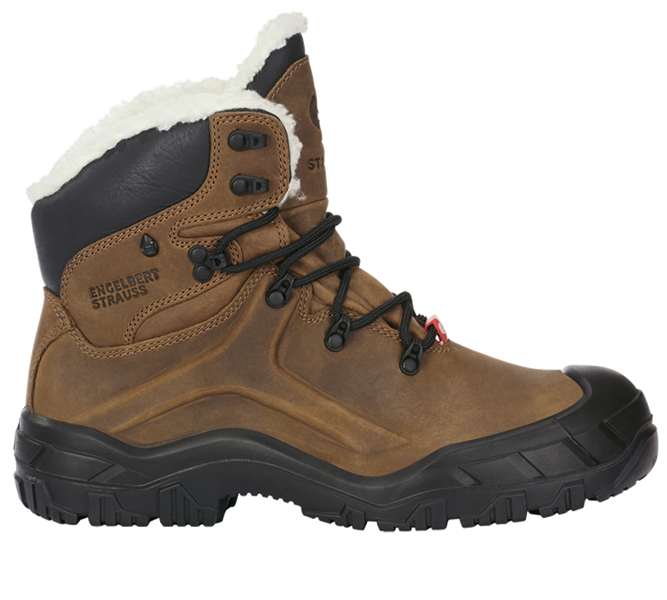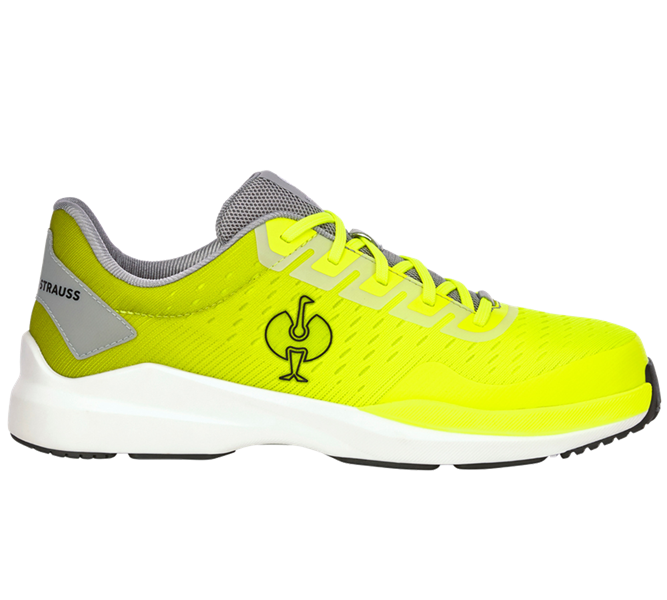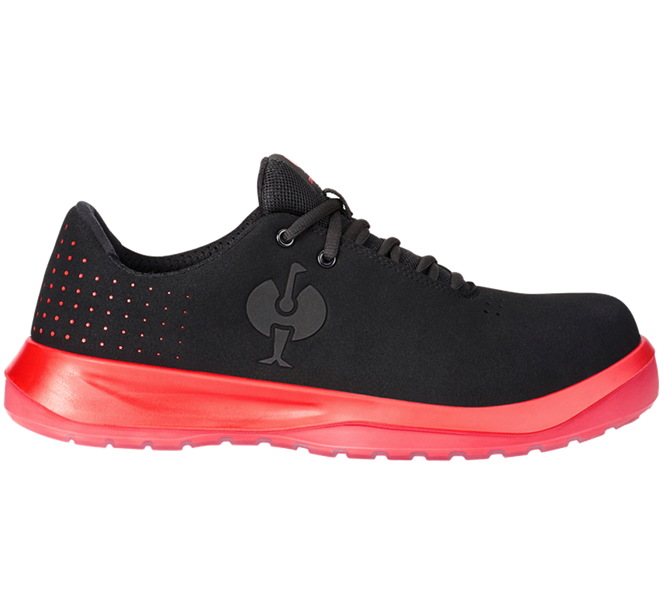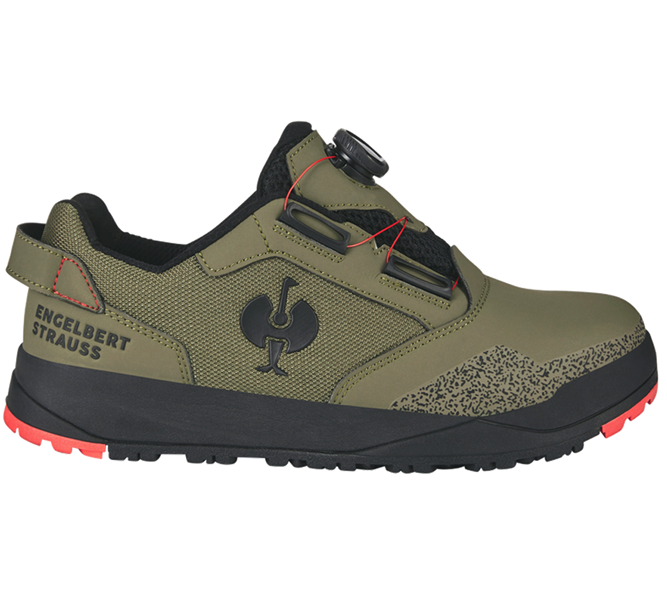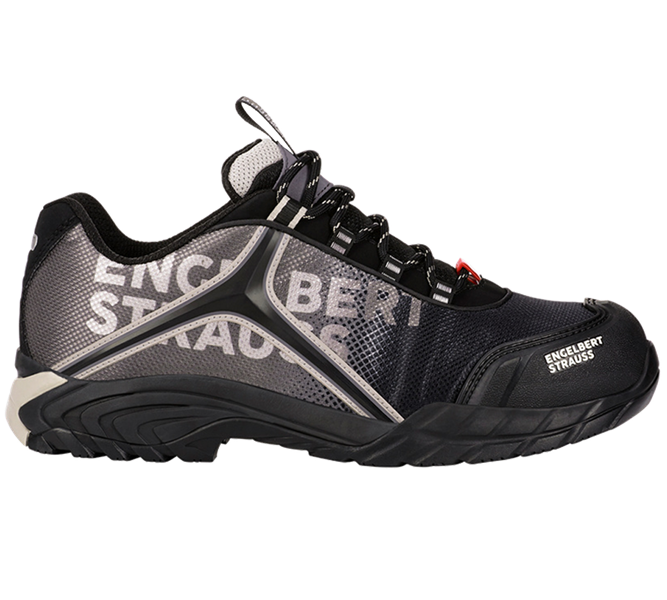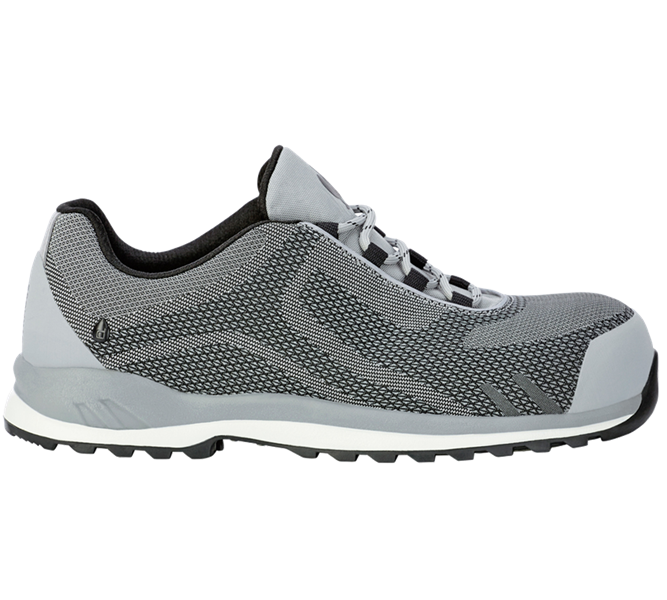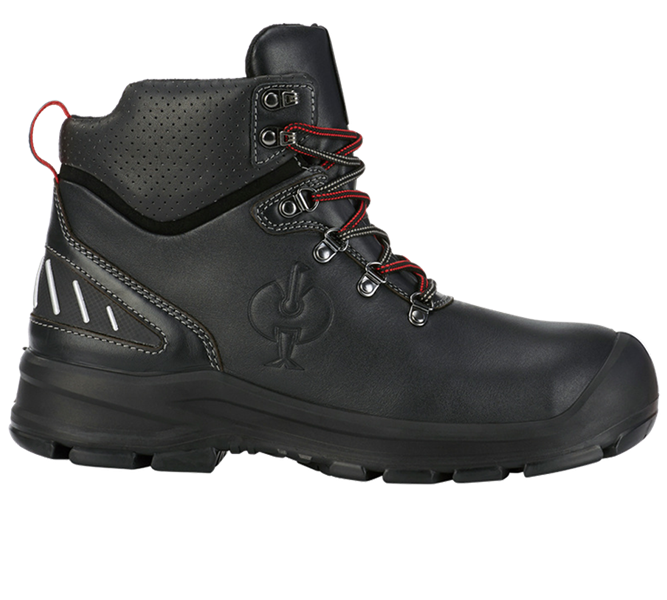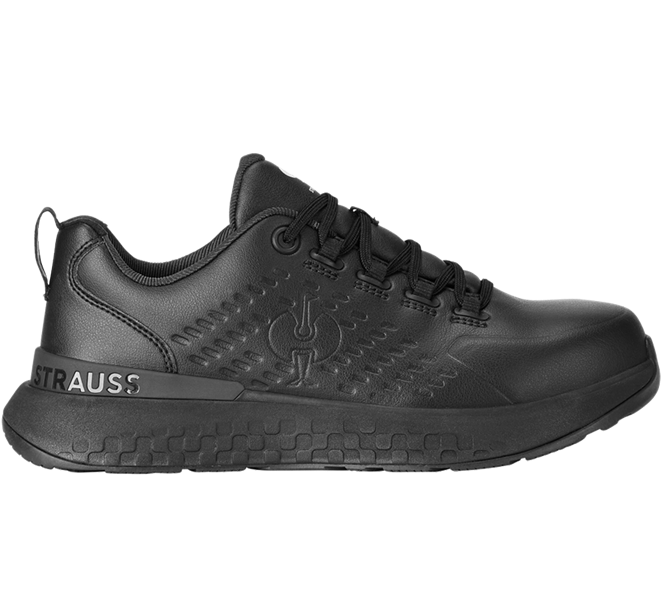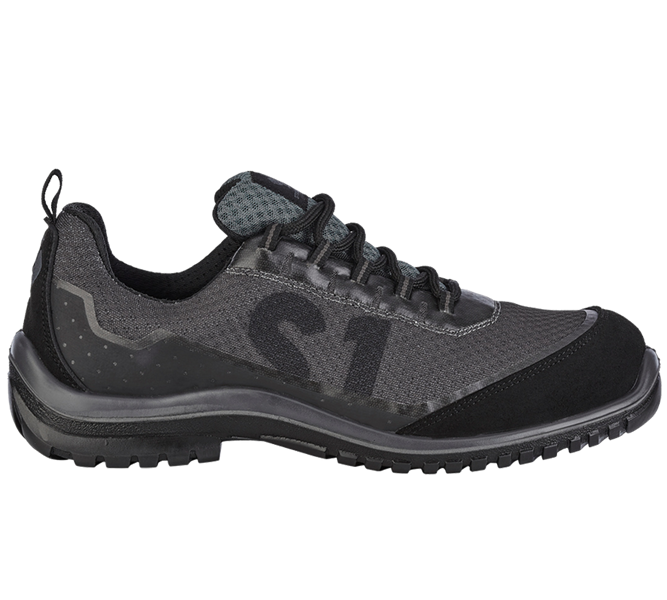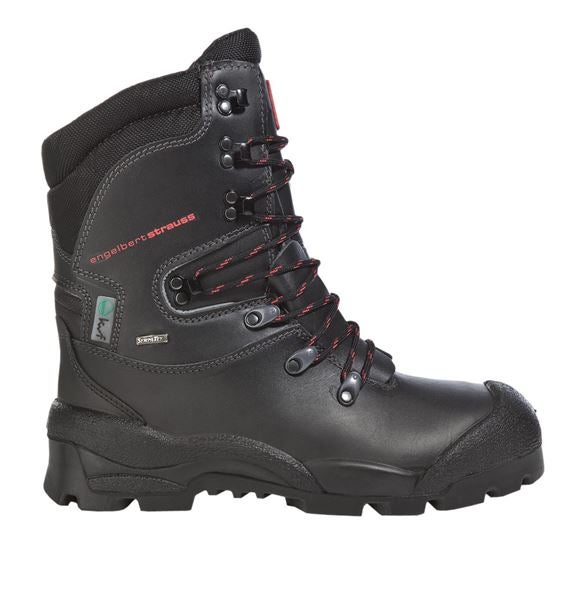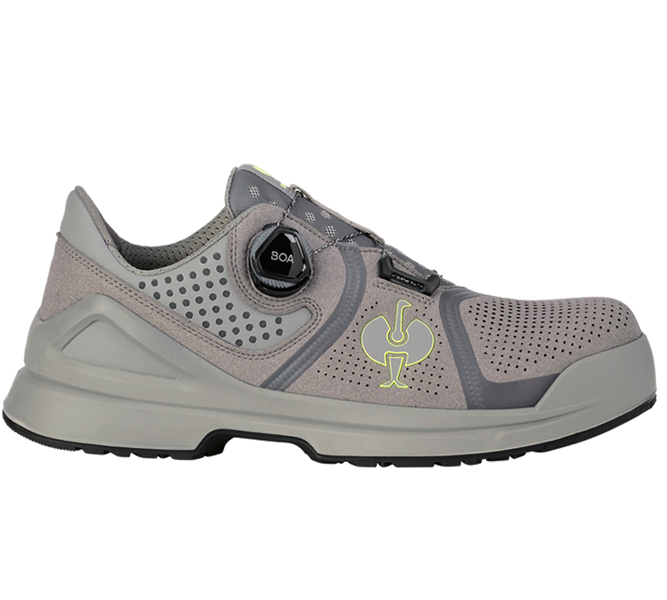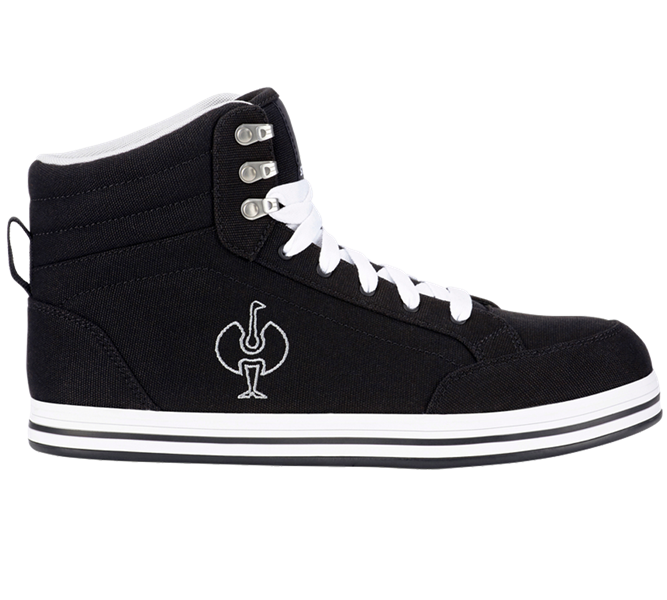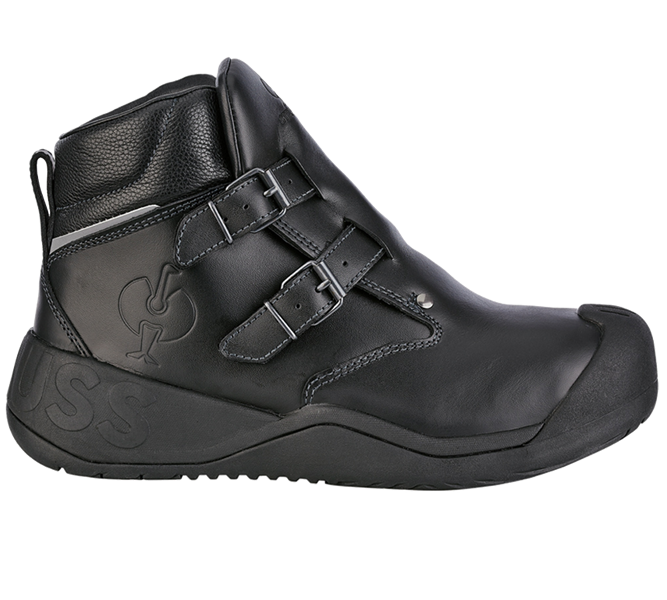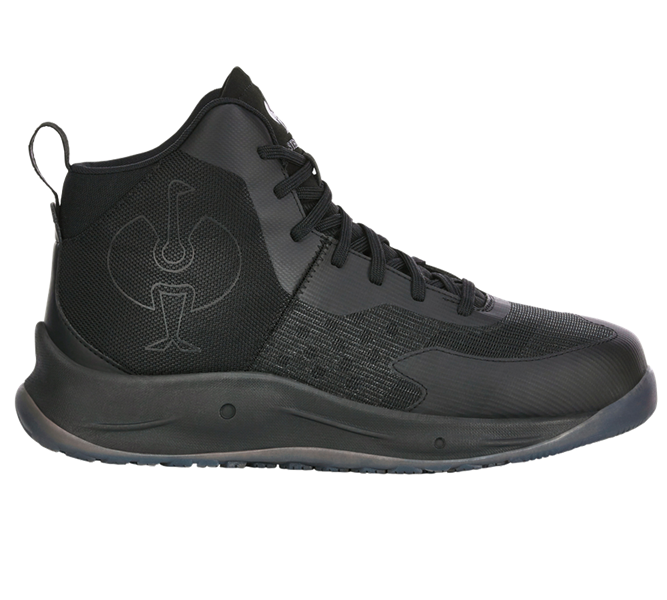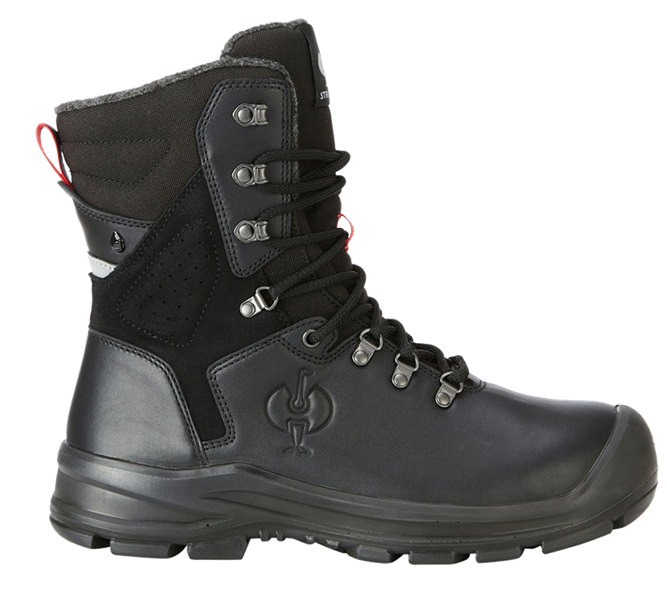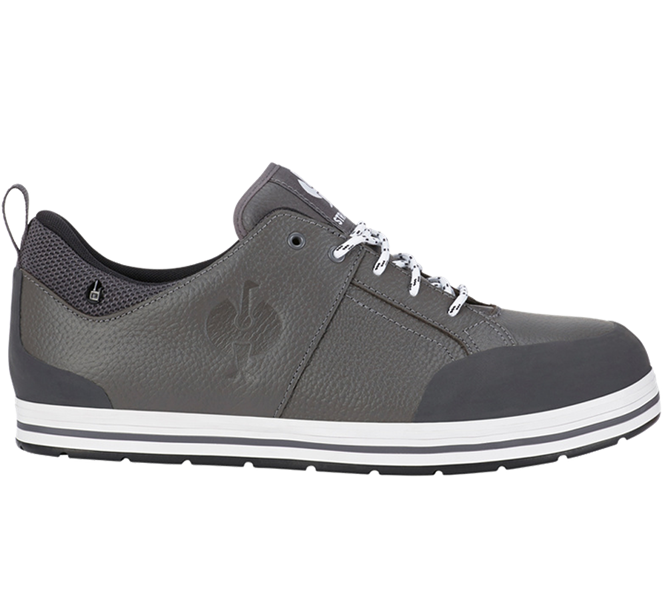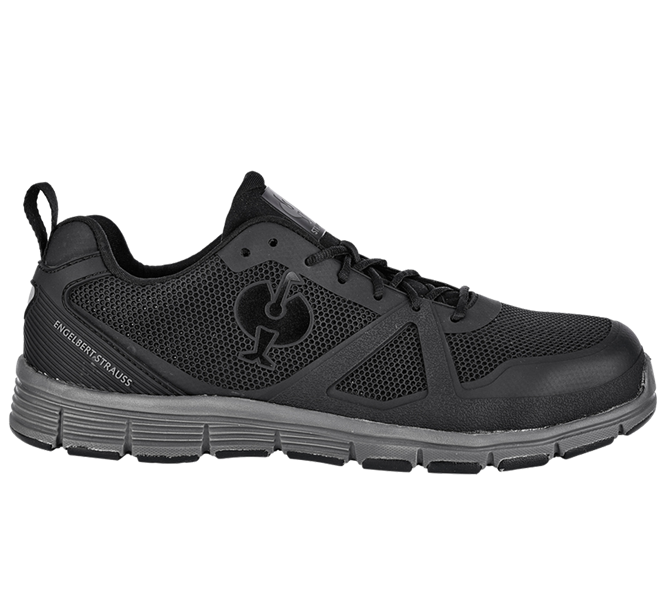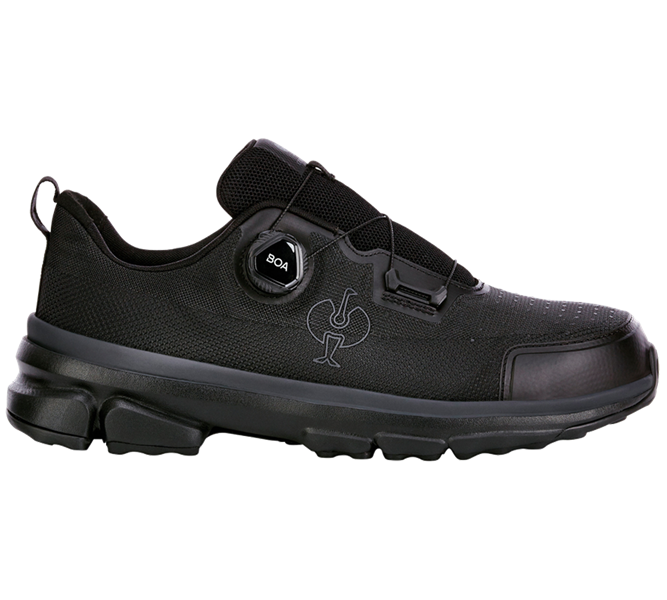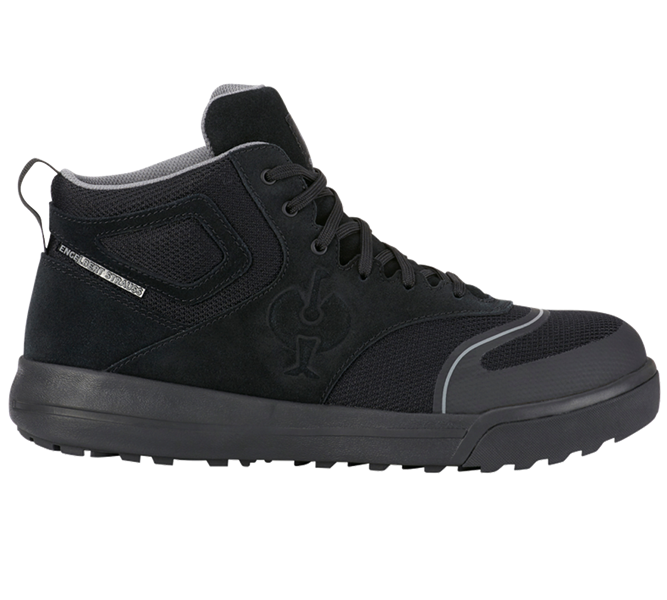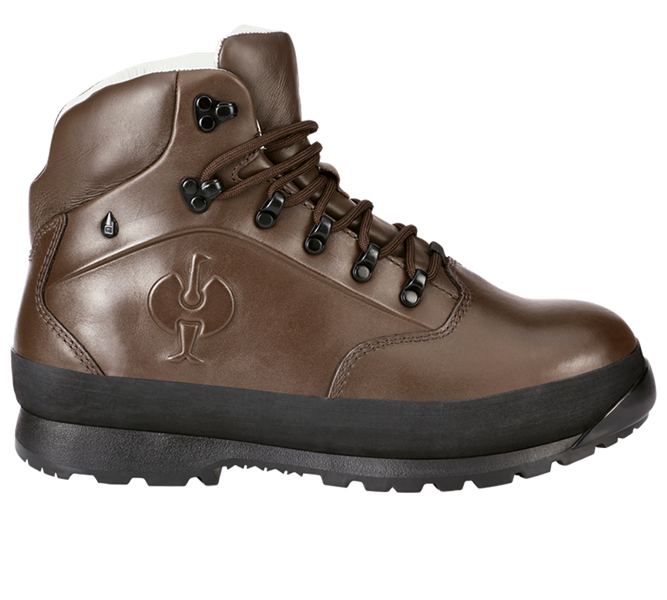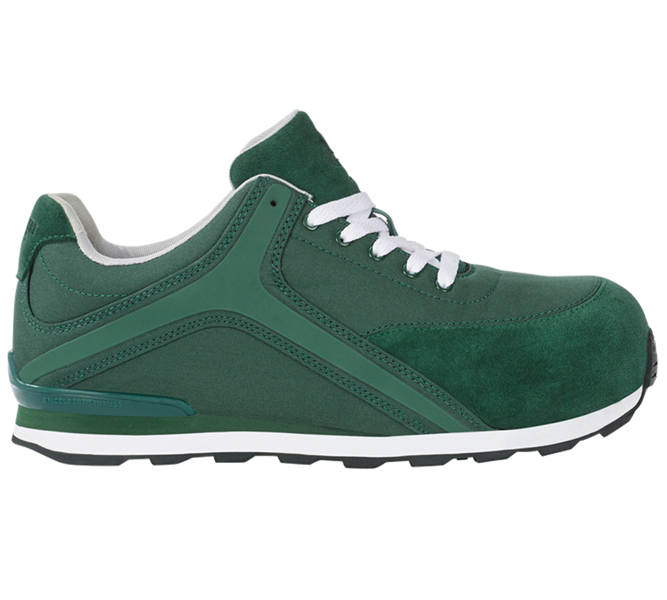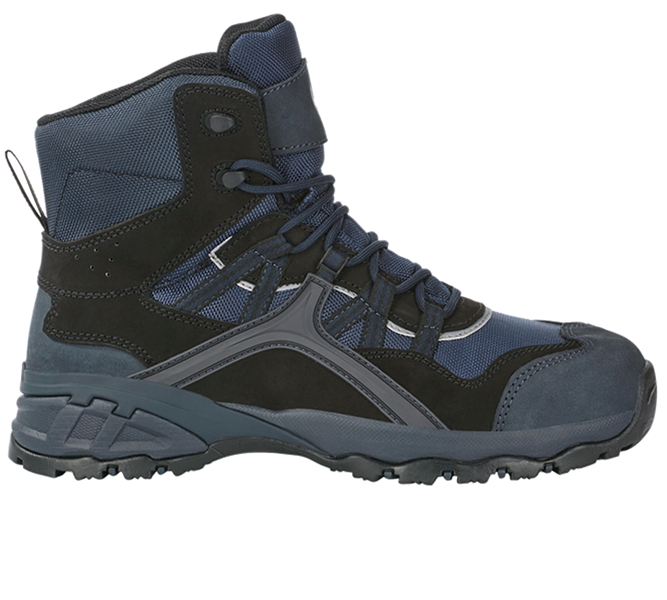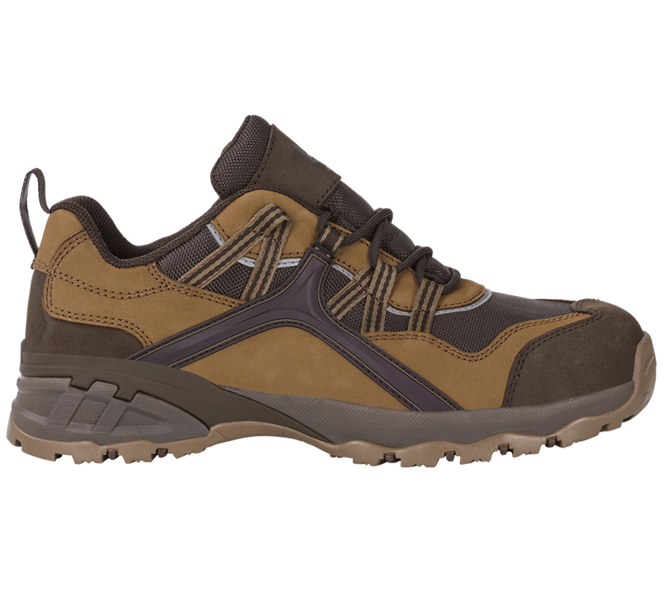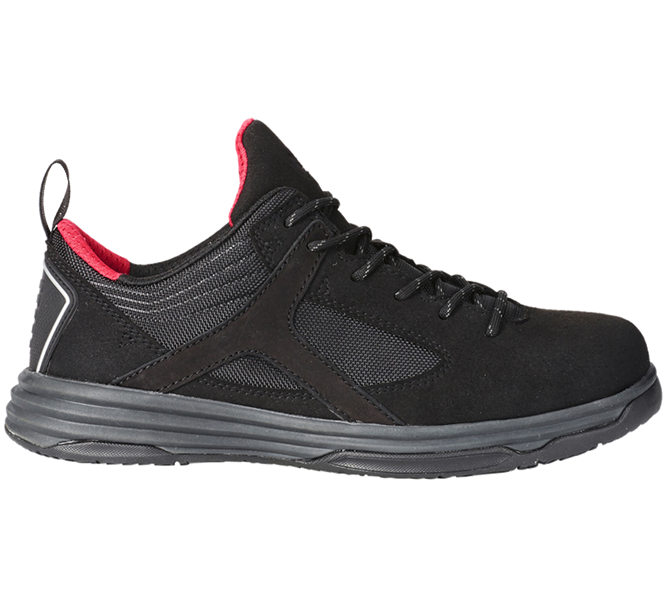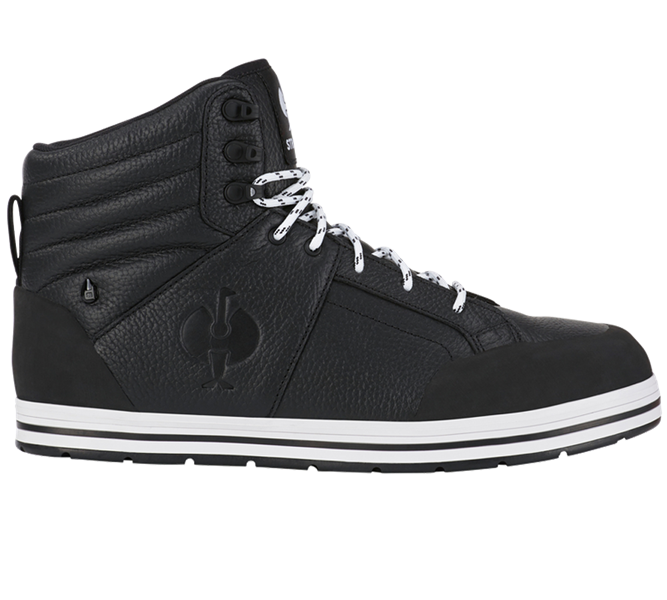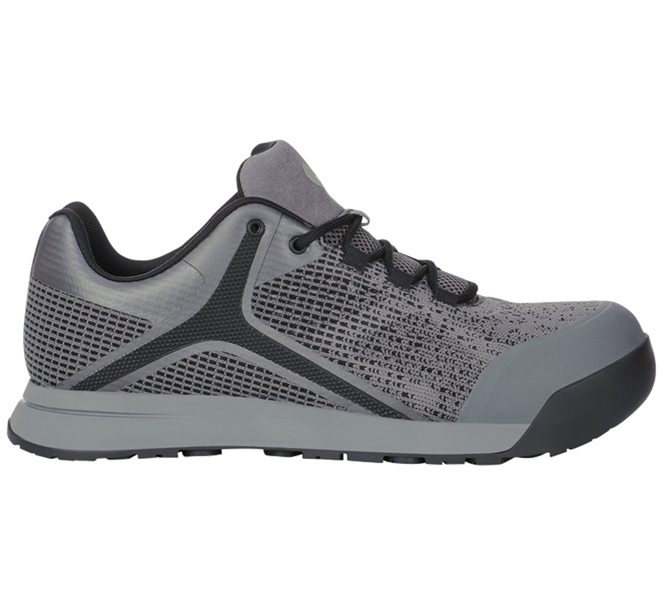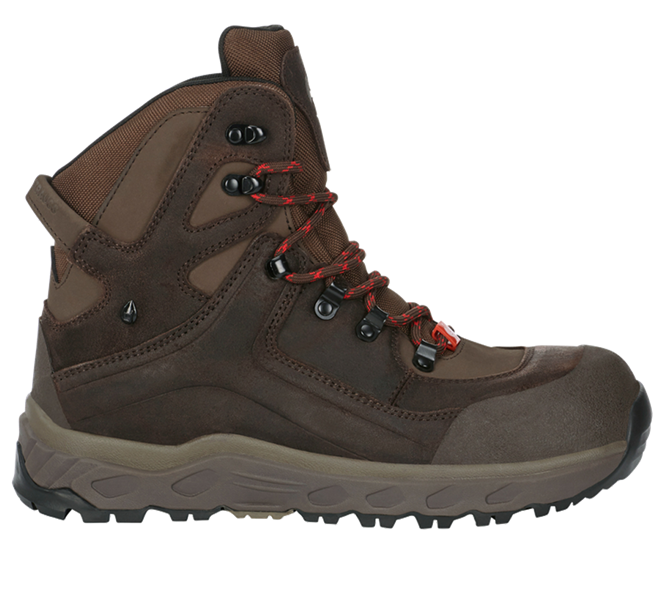EN ISO 20345
Safety shoes are protective footwear that must be equipped with a toe cap. The toe protection made of steel, aluminium or plastic protects the foot reliably against pressure and impacts up to 200 Joule. Also, non-slip soles belong to the basic features of the safety shoes. The standard 20345 governs the basic requirements of safety shoes. Depending on the way the shoes are used and the respective requirements, one of the following safety levels needs to be selected: SB | S1 | S1P | S2 | S3 | S4 | S5 | S6 | S7
Due to the adaptation of the EN ISO 20345:2022 and EN ISO 20347:2022, new safety classes are created to further subdivide the characteristics of safety and work shoes in the future. You can find further information on our
overview page.
Safety shoes are protective footwear that must be equipped with a toe cap. The toe protection made of steel, aluminium or plastic protects the foot reliably against pressure and impacts up to 200 Joule. Also, non-slip soles belong to the basic features of the safety shoes. The standard 20345 governs the basic requirements of safety shoes. Depending on the way the shoes are used and the respective requirements, one of the following safety levels needs to be selected: SB | S1 | S1P | S2 | S3 | S4 | S5 | S6 | S7
Due to the adaptation of the EN ISO 20345:2022 and EN ISO 20347:2022, new safety classes are created to further subdivide the characteristics of safety and work shoes in the future. You can find further information on our
overview page.
Safety shoes are protective footwear that must be equipped with a toe cap. The toe protection made of steel, aluminium or plastic protects the foot reliably against pressure and impacts up to 200 Joule. Also, non-slip soles belong to the basic features of the safety shoes. The standard 20345 governs the basic requirements of safety shoes. Depending on the way the shoes are used and the respective requirements, one of the following safety levels needs to be selected: SB | S1 | S1P | S2 | S3 | S4 | S5 | S6 | S7
Due to the adaptation of the EN ISO 20345:2022 and EN ISO 20347:2022, new safety classes are created to further subdivide the characteristics of safety and work shoes in the future. You can find further information on our
overview page.
Safety shoes are protective footwear that must be equipped with a toe cap. The toe protection made of steel, aluminium or plastic protects the foot reliably against pressure and impacts up to 200 Joule. Also, non-slip soles belong to the basic features of the safety shoes. The standard 20345 governs the basic requirements of safety shoes. Depending on the way the shoes are used and the respective requirements, one of the following safety levels needs to be selected: SB | S1 | S1P | S2 | S3 | S4 | S5 | S6 | S7
Due to the adaptation of the EN ISO 20345:2022 and EN ISO 20347:2022, new safety classes are created to further subdivide the characteristics of safety and work shoes in the future. You can find further information on our
overview page.
Safety shoes are protective footwear that must be equipped with a toe cap. The toe protection made of steel, aluminium or plastic protects the foot reliably against pressure and impacts up to 200 Joule. Also, non-slip soles belong to the basic features of the safety shoes. The standard 20345 governs the basic requirements of safety shoes. Depending on the way the shoes are used and the respective requirements, one of the following safety levels needs to be selected: SB | S1 | S1P | S2 | S3 | S4 | S5 | S6 | S7
Due to the adaptation of the EN ISO 20345:2022 and EN ISO 20347:2022, new safety classes are created to further subdivide the characteristics of safety and work shoes in the future. You can find further information on our
overview page.
